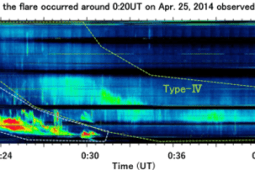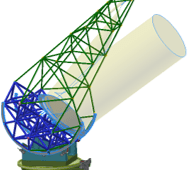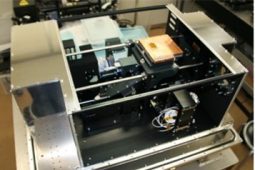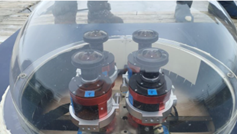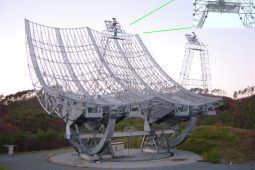Detailed Analysis of Solar Radio Spectra based on High-Time and High-Frequency Resolution Observations
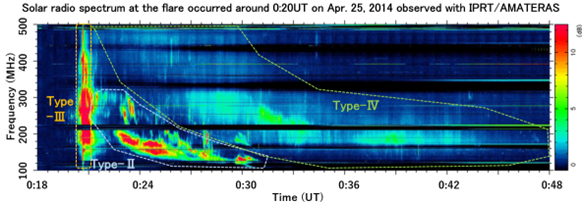
Sunspots are regions where strong magnetic fields exist. Occasionally, the configuration of these magnetic fields undergoes sudden changes, releasing enormous amounts of energy in a short time. This phenomenon is called “flare”. During a flare, high speed particles are generated in the corona above the sunspot regions. These particles become the energy source of various radio waves, those carry information on the particle origin — where and how the particles generated by the flare and acquired their energy — and about the coronal environment, in which they propagated to reach the observer.
We daily conduct high-resolution solar radio observations using AMATERAS (the Assembly of Metric-band Aperture TElescope and Real-time Analysis System) installed on IPRT (the Iitate Planetary Radio Telescope), which enables high-time and high-frequency resolution of solar radio spectra observations. Using this system we have obtained numerous results, including the identification of diverse spectral building blocks of solar radio waves to elucidate their generation processes, and detailed spectral shape to uncover radio wave acceleration processes and the existence of fine density fluctuations in the propagating region of the corona.
Solar radio frequencies carry information on plasma density in their source regions. Measuring higher (lower) frequency radio waves provides information on radio emission and propagation in the regions closer (farther) to the Sun. We are currently advancing plans to expand our observational frequency range further, aiming to explore the dynamic plasma conditions across a broader region of the corona. (Author: H. Misawa)

